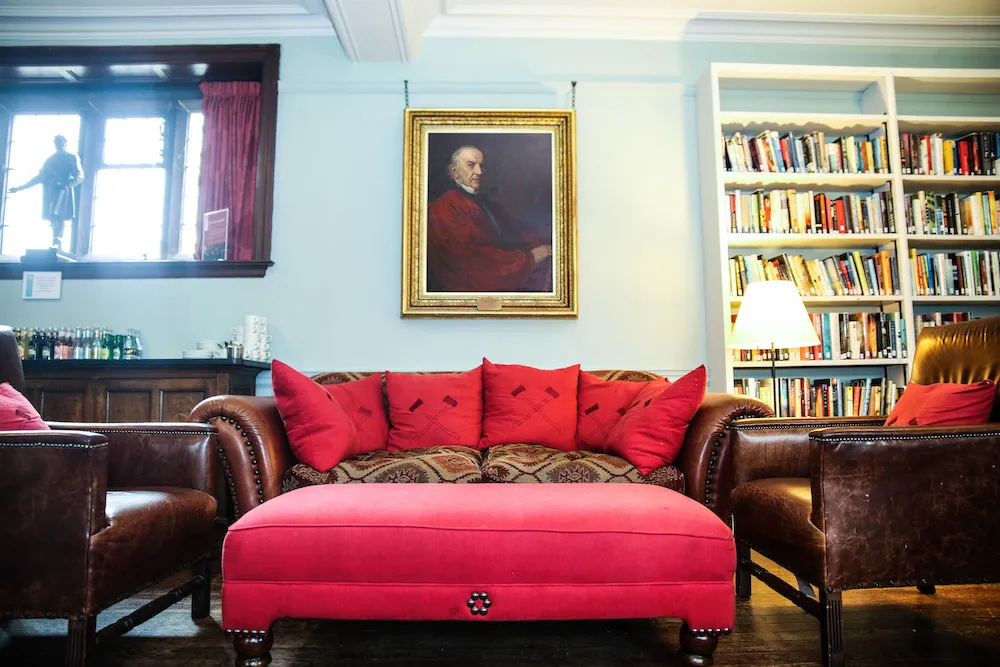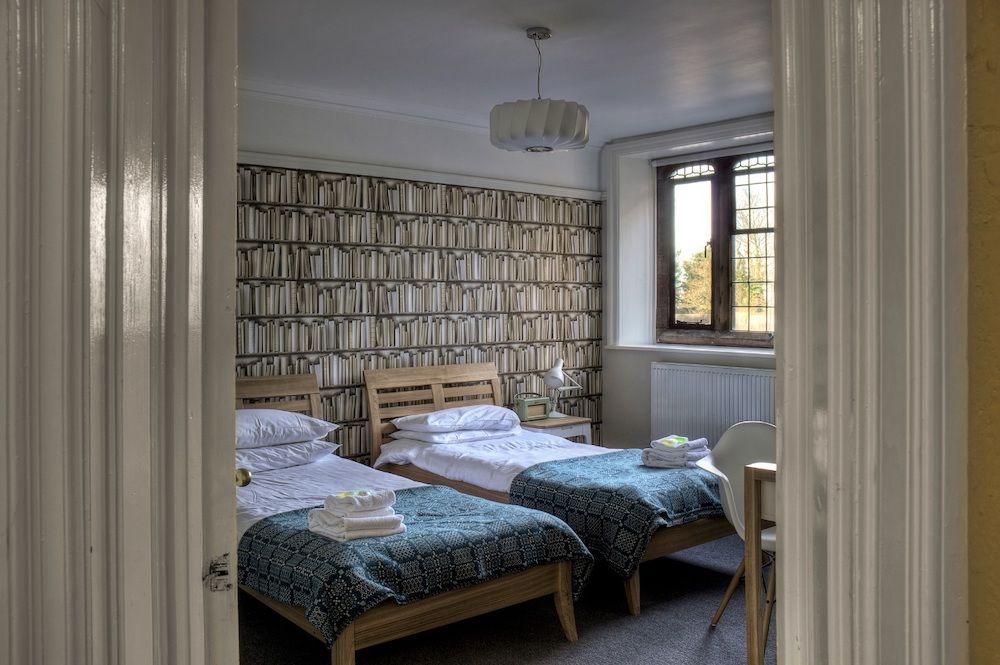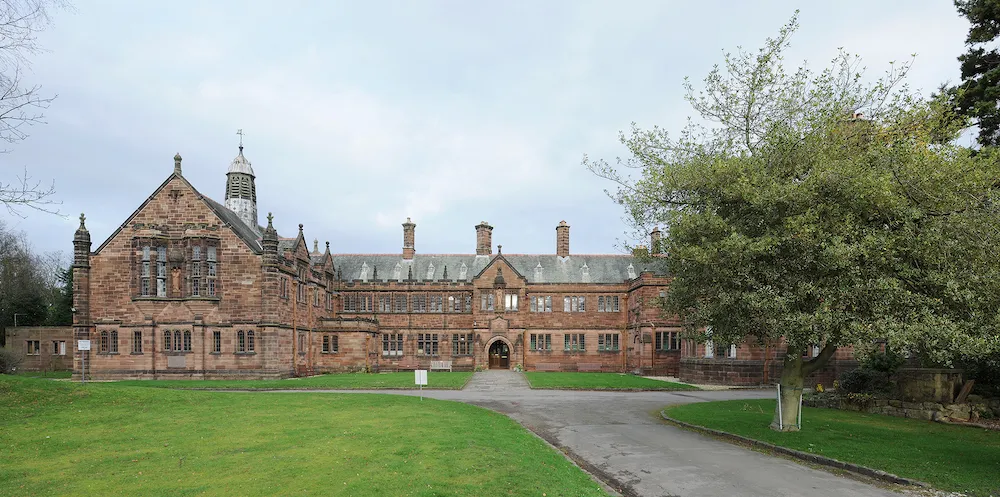I Spent the Night at a Library in Wales, and You Can Too
Housing more than 150,000 written works, Gladstone’s Library is the only residential library in Great Britain
:focal(495x428:496x429)/https://tf-cmsv2-smithsonianmag-media.s3.amazonaws.com/filer/52/b4/52b4282c-1986-4974-ab15-94231fc126ae/9_gladstones_library_central_view_extra_large_size_michael_beckwith.jpg)
After a whirlwind weekend exploring the Welsh capital of Cardiff followed by a multi-day adventure meandering along the country’s craggy coastline, I was ready for a little bit of peace and quiet. Fortunately, I knew exactly where to look.
Hidden behind a grove of trees in Hawarden, Flintshire, a small village in north Wales located about 25 miles south of Liverpool, sits Gladstone’s Library, the only prime ministerial library in Great Britain. Named after four-term Prime Minister William Ewart Gladstone (1868-74, 1880-85, 1886, and 1892-94), the 117-year-old stone building is home to the late statesman’s personal collection of 32,000 books—part of the library’s extensive collection of 150,000 written works focused on everything from history and politics to theology and literature.
Not only does the library house one of the most comprehensive written collections on the island, but it also offers something the average library does not: overnight stays. As a self-proclaimed bibliophile, spending the night at a library curled up with a good book sounded like a dream come true. And I’m obviously not alone in my sentiment.
Gladstone’s Library welcomed its first overnight guests on June 29, 1906, right around the same time the library opened the doors of its current building. (The library’s history actually dates back to 1894, when it was housed inside the “tin tabernacle,” a corrugated metal structure located near the library’s current site.) Now, more than a century later, the library’s onsite 26-room B&B still draws guests from around the United Kingdom, Europe and United States who’ve dreamt of sleeping in a library for the night.

“Our visitors are a real mix,” says Amy Sumner, marketing manager of Gladstone’s Library. “Yes, those who like to read [come here], but also scholars, academics and clergy come to use the collection. Students enjoy the silence of the Reading Room; writers who value the opportunity to break away from the routine of daily life to work on their book and projects; and then those who just like to travel and stay somewhere a little quirky or different.”
I can relate to all of these reasons, but as a writer I couldn’t think of a better place to stay the night than a library. (Is experiencing writer’s block even possible inside a library?) After getting my room key and dropping off my bags in my guest room, I descend down the building’s wooden staircase to the main Reading Room. The only noise is the sound of the wood floorboards creaking beneath my feet. The sweeping, two-story room with its massive windows and arched ceiling feel like a scene pulled straight from fiction. Hogwarts School of Witchcraft and Wizardry immediately comes to mind.
I make my way up an enclosed spiral staircase to the second level and run my fingers across the leather bindings of hundreds of tomes whose yellow pages had no doubt been leafed through by numerous scholars and bibliophiles over the years. Legends of the Saints. The Altar. The Problem of Immortality. A Treatise on Purgatory. As an overnight guest at the B&B, I’ll have access to all of them inside the Reading Room up until it closes at 10 p.m.

After a quick meal of pasta and vegetables at Food for Thought, the property’s onsite café, I grab my laptop, thinking I might write this story, and head back to the Reading Room, settling into one of the only vacant desks on the second floor. From my perch, I have the perfect vantage point of the room.
According to a pamphlet I picked up detailing the library’s history, Gladstone read some 22,000 of the 32,000 books in his collection, and even wrote annotations in nearly 6,000.
“His copy of James Froude’s 1890 biography of the Earl of Beaconsfield, better known as his great political rival Benjamin Disraeli, contains some of the most fascinating marginalia in Gladstone’s original collection,” says Gary Butler, the library’s assistant librarian. “Beside a passage describing worsening relations with Russia as discussed in Parliament, Gladstone has written ‘untrue’ three times besides various passages. This shows how candid he often was in the margins of his own books.”

There was a certain thrill to exploring the shelves after the librarians had gone home for the evening, even though the library does offer free “Glimpses” of the building seven days a week at noon, 2 p.m. and 4 p.m. Gladstone's also hosts numerous events that are open to the public, including readings with authors, language classes and festivals. Perhaps its biggest event is the seventh annual Gladfest, which brings together guest speakers, authors, book signings, open mic poetry readings and more from September 6-8.
“We recognize that there are people who want to see inside those big wooden doors,” Sumner says. “These start with an introduction to William Gladstone and his library—setting it in context with the opportunity for people to ask questions. You are then escorted into the History Room—the room which houses Gladstone’s own personal collection of some 32,000 books. This way people are able to see and get a sense of the library.”
Visitors also learn about the library’s original purpose, which gratified Gladstone’s desire to share his personal reading collection with the public. According to the library, in 1894, the octogenarian enlisted the help of his daughters and his valet to wheel his massive collection the three-quarters of a mile journey from his home at Hawarden Castle to the library. He unloaded the boxed books himself and even came up with his own cataloging system.
Gladstone’s daughter Mary Drew perhaps sums up the library’s purpose the best when she wrote that he wanted to “bring together books who had no readers with readers who had no books.”
With that thought in mind, I closed my laptop, pushed back my chair and went to the nearest bookshelf. After all, I had come to the library for one reason: to read.
Planning Your Next Trip?
Explore great travel deals
Smithsonian magazine participates in affiliate link advertising programs. If you purchase an item through these links, we receive a commission.